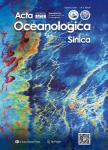Diagnosis of iridovirus in large yellow croaker by PCR
Diagnosis of iridovirus in large yellow croaker by PCR作者机构:Third Institute of Oceanography State Oceanic Administration Xiamen 361005 China School of Life Sciences Xiamen University Xiamen 361005 China Fujian Entry-Exit Inspection/Quarant Fuzhou 350000 China
出 版 物:《Acta Oceanologica Sinica》 (海洋学报(英文版))
年 卷 期:2003年第22卷第4期
页 面:635-641页
核心收录:
学科分类:0710[理学-生物学] 07[理学] 071002[理学-动物学]
基 金:ThisstudywassupportedbytheKeyProjectofFujianProvincialScienceandTechnologyundercontractNo .2 0 0 1Z0 2 1 andbySpecialFundforSocialServiceofMinistryofScienceandTechnologyandOcean"86 3"Projectundercon tractNo .2 0 0 1AA6 2 0 6 0 3
主 题:large yellow croaker (Pseudosciaena crocea) iridovirus ATpase gene pCR
摘 要:A rapid and sensitive PCR-based method for the detection of the large yellow croaker iridovirus (LYCIV) is described, which involves the amplification of a 295 bp fragment of the LYCIV ATPase gene from DNA isolated from naturally infected fish spleen. Sequencing of LYCIV ATPase gene fragment showed it shared 100% nucleotide sequence homology with the corresponding region of the ATPase gene of red sea bream iridovirus (RSIV) and sea bass iridovirus (SBIV), suggesting that LYCIV was homologous with RSIV and SBIV at least in part of the gemone. The specificity and sensitivity of the PCR procedure were tested on the iridovirus-infected fishes, the expected fragment was detected from spleen DNA samples of infected fishes, whereas no fragments were amplified from healthy fish spleen DNA, white spot syndrome baculoviruses (WSBV) DNA and pseudorabies virus (PRV) DNA. Detection limit of this method was 10(-7) ng positive plasmid DNA containing target sequence, equal to about 100 virions. In the infected experiment, first positive detection (1/4) appeared at Day 3 post-infection, all fish (4/4) tested positive at Day 7, however obvious symptoms were observed at Day 8, so LYCIV infection could be detected prior to the appearance of obvious symptoms. These results indicate that this PCR method could be used for early, rapid and specific detection of LYCIV infection.



